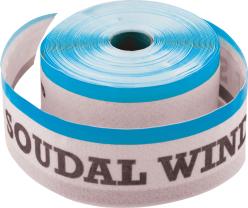
Increased acoustic comfort
Your home is your place of refuge. After a hectic day at work, you want nothing more than to enjoy a bit of peace and quiet. In order to keep all noise nuisance in your home to minimum, you can add acoustic insulation. Acoustic insulation absorbs and attenuates sound.
There are two types of sound insulation – airborne sound insulation and contact sound insulation, which are often confused. Airborne sound is propagated directly through the air. This may be people talking or a radio or TV that is turned on, for example. Contact sound is propagated directly through a solid material. This may be footsteps on the floor, moving chairs or a closing door, for instance.
It makes little sense to install acoustic insulation in your home if you fail to pay enough attention to other elements of the structure. For example, if you subsequently fit a window with poor acoustic insulation or a well-insulated window with a defective acoustic seal, you will create noise leaks. Noise will find a way through any opening or weak point in the building. Make sure all unnecessary openings, gaps, cracks and fissures are and remain well sealed, and remember that where air can penetrate, noise can too.
Technology of elastic PU foam
A building is constantly moving and consists of various materials that all move independently of each other. Joints between these various parts can therefore best be made with a flexible product. This applies all the more to joints around window frames. An elastic PU foam ensures sustainable acoustic and thermal insulation in such instances.
Soudafoam Window & Door SWS is a professional, elastic PU foam that absorbs up to 50% of joint movement and therefore ensures durable thermal and acoustic insulation. It is particularly suitable for making structural junctions for window installation according to EPB rules and avoiding cold bridges.
As a rule, connection joints must be designed and executed such that the sound insulation value Rw of the structural elements is maintained. Small holes or hairline cracks in the joint area can significantly reduce the overall result by more than 10 dB (see figure below). An airtight connection joint is therefore a basic requirement for sound insulation and protection against heat and moisture.


